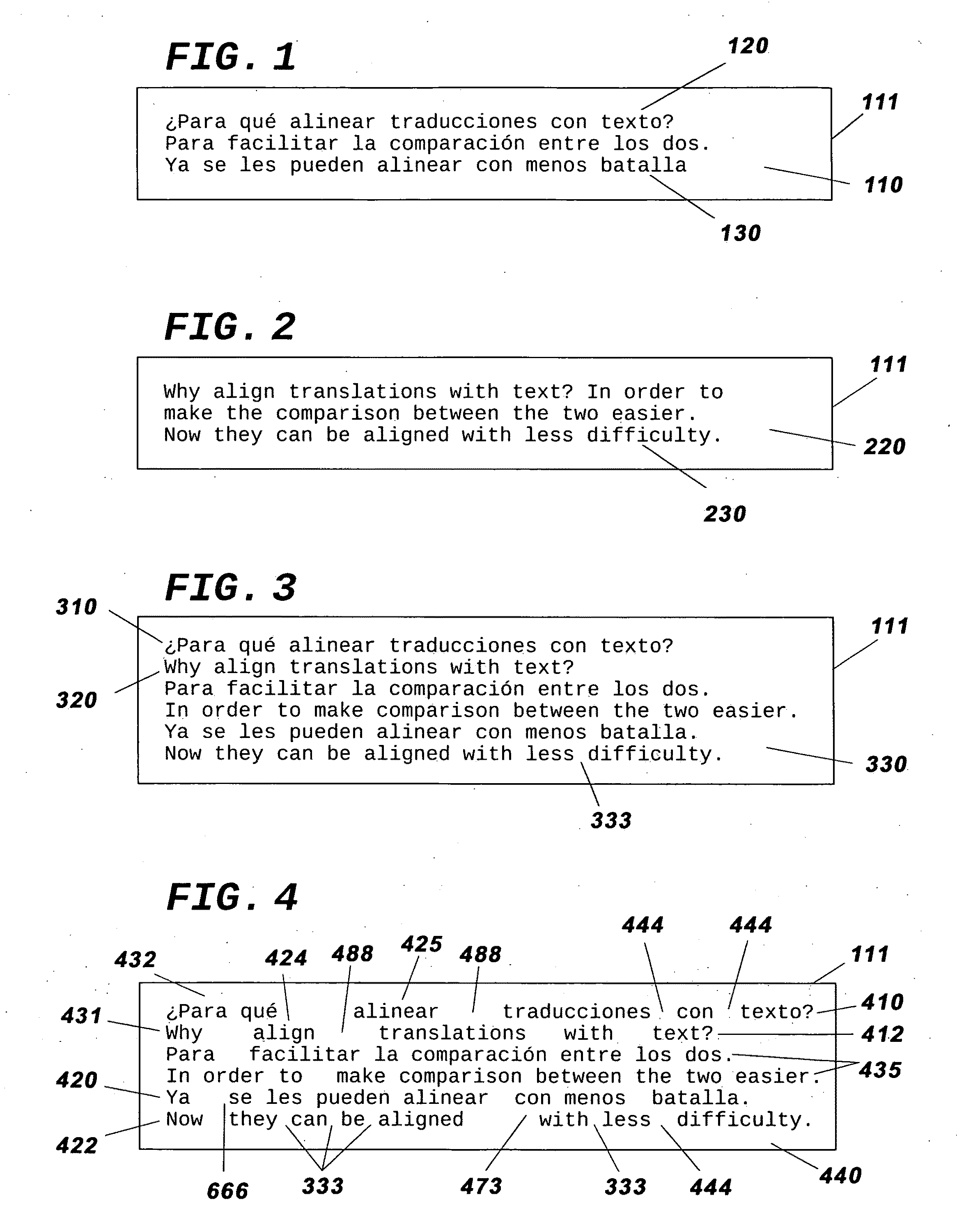Aligning chunk translations for language learners
a chunk translation and language technology, applied in the field of language learning tools and techniques, can solve the problems of not optimal, explicit grammar rules, and inability to align chunk translations, and achieve the effects of improving the automatic production of chunk translation, easy learning and regular use, and easy correcting small errors
- Summary
- Abstract
- Description
- Claims
- Application Information
AI Technical Summary
Benefits of technology
Problems solved by technology
Method used
Image
Examples
Embodiment Construction
[0094]Briefly, as illustrated in FIG. 3, when a text and a translation are combined into a single document 333; and when each line of translation 320 is placed directly below each line of text 310; and when, as illustrated in FIG. 4, a corresponding series 488 of extra spaces 444 is added between related chunks of text and related chunks of translation, then a computer program, as is represented in FIG. 5, can locate and array 530 the corresponding chunks of text and translation, then align the chunks consistently in variable outputs 550, including those represented in FIG. 6, FIG. 7, FIG. 8, FIG. 9, FIG. 10, FIG. 11, FIG. 12, FIG. 13, FIG. 14, FIG. 15, FIG. 16, FIG. 17, FIG. 18, FIG. 19, FIG. 21, FIG. 22 and FIG. 23.
[0095]A general depiction of one example embodiment of the present invention is shown by the illustration provided in FIG. 8, which combines a text and a translation into one single and editable document 111, while printing segments or “chunks” of translation 812 in ali...
PUM
 Login to View More
Login to View More Abstract
Description
Claims
Application Information
 Login to View More
Login to View More - R&D
- Intellectual Property
- Life Sciences
- Materials
- Tech Scout
- Unparalleled Data Quality
- Higher Quality Content
- 60% Fewer Hallucinations
Browse by: Latest US Patents, China's latest patents, Technical Efficacy Thesaurus, Application Domain, Technology Topic, Popular Technical Reports.
© 2025 PatSnap. All rights reserved.Legal|Privacy policy|Modern Slavery Act Transparency Statement|Sitemap|About US| Contact US: help@patsnap.com



